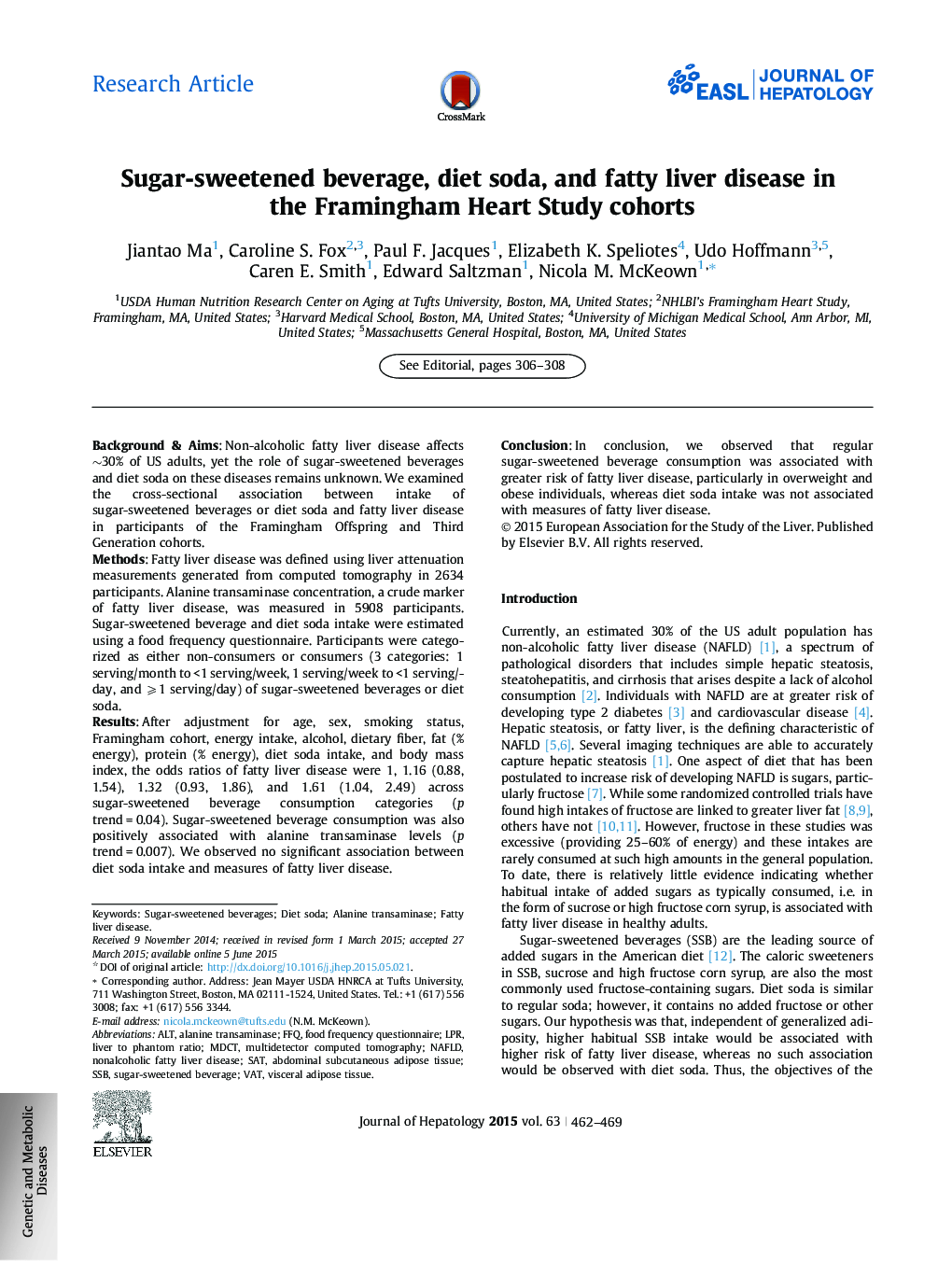| Article ID | Journal | Published Year | Pages | File Type |
|---|---|---|---|---|
| 6101541 | Journal of Hepatology | 2015 | 8 Pages |
Background & AimsNon-alcoholic fatty liver disease affects â¼30% of US adults, yet the role of sugar-sweetened beverages and diet soda on these diseases remains unknown. We examined the cross-sectional association between intake of sugar-sweetened beverages or diet soda and fatty liver disease in participants of the Framingham Offspring and Third Generation cohorts.MethodsFatty liver disease was defined using liver attenuation measurements generated from computed tomography in 2634 participants. Alanine transaminase concentration, a crude marker of fatty liver disease, was measured in 5908 participants. Sugar-sweetened beverage and diet soda intake were estimated using a food frequency questionnaire. Participants were categorized as either non-consumers or consumers (3 categories: 1 serving/month to <1 serving/week, 1 serving/week to <1 serving/day, and ⩾1 serving/day) of sugar-sweetened beverages or diet soda.ResultsAfter adjustment for age, sex, smoking status, Framingham cohort, energy intake, alcohol, dietary fiber, fat (% energy), protein (% energy), diet soda intake, and body mass index, the odds ratios of fatty liver disease were 1, 1.16 (0.88, 1.54), 1.32 (0.93, 1.86), and 1.61 (1.04, 2.49) across sugar-sweetened beverage consumption categories (p trend = 0.04). Sugar-sweetened beverage consumption was also positively associated with alanine transaminase levels (p trend = 0.007). We observed no significant association between diet soda intake and measures of fatty liver disease.ConclusionIn conclusion, we observed that regular sugar-sweetened beverage consumption was associated with greater risk of fatty liver disease, particularly in overweight and obese individuals, whereas diet soda intake was not associated with measures of fatty liver disease.
